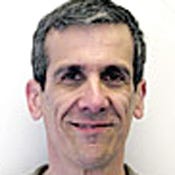Wells Fargo Gets Closer To Customers
Wells Fargo uses its success in online banking to help companies conduct business more efficiently

The commercial banking part of the Internet Services Group resides in the wholesale banking group, rather than a centralized business unit. "We were trying to change business processes internally, and the best way to do that [was] to become part of the wholesale banking group," Ellis says.
Wells Fargo is poised to implement technology projects in six months or less, Gartner analyst Brad Adrian says. The wholesale unit reassesses its technology wish list every half year. Quickly implementing IT projects that benefit customers helps boost customer loyalty, Adrian says.
Sensitive to customer needs, Wells Fargo performs what it calls ethnography studies weekly at client sites to give it continuous customer feedback during each step of a product rollout, easing the integration of the technology into the businesses process. Bank experts literally camp out at a customer site for several days to observe how employees go about their jobs. The bank's goal is to work proactively to increase CEO's use in order to spot situations in which customers are dissatisfied with any of the product's features and get them fixed. Wells Fargo presents a detailed report of the findings to the customer and bank executives responsible for servicing that customer. Besides building customer loyalty, the studies help the bank improve its tech-laden products.
Gary D. Nelson Inc., a $200 million-a-year temporary staffing company, recently participated in a 2-1/2-day study. Wells Fargo staffers interviewed key members of Nelson's management team for two hours each and observed various financial workflows that employees perform, such as payroll, accounts payable, and accounts receivable.
Wells Fargo's teams are part of the wholesale banking division and consist of four people who come from its strategic account-management group and possess a variety of banking experience in treasury management, investments, credit card, and relationship management. A database and reporting system is used to communicate with the appropriate areas. Wells Fargo staffers receive the data and work with the business groups to establish processes and technology to aid the customer.
The bank assigns its wholesale customer strategies unit the task of determining ways to improve the customer experience, and it passes on recommendations culled from the study to the bank relationship manager who works with the customer. There's no cost to the customer. The payback for Wells Fargo is a deeper and stronger relationship with customers. Wells Fargo says it's one of a few banks that performs such ethnography studies.
Wells Fargo's study for Nelson disclosed a range of problems: The company maintained different business units that staff 5,000 workers, ranging from managers and clerical employees in its offices in Sonoma, Calif., to field workers in the vineyards of Napa Valley. Each week, its payroll department scrambled to collect the number of hours worked for each employee and get paychecks out. The company, meanwhile, collected payments from Nelson's clients that employed the temps. "In our business, cash flow is everything. We pay people before we invoice the client," Nelson CFO Bob Rembowski says.
The ethnography study uncovered several other problem areas, chiefly that Nelson needed to push direct payroll deposit more aggressively: It was writing 100,000 payroll checks a year, while only 20% of its contract workers used direct deposit. Writing payroll checks is expensive. Labor, overhead, and banking fees add up. In addition, paper checks invite fraud, something electronic payments can eliminate. Wells Fargo recommended that Nelson adopt payroll cards, which allow pay to be electronically deposited into an employee's checking account. The bank also suggested Nelson improve cash flow by producing a cash-flow report for each of its five divisions, complete with details on checks written, recurring payments, and cash inflows. Nelson should make more use of CEO's many services, including online payments, check imaging, and a variety of bank reports, Wells Fargo said. Nelson evaluated the recommendations and developed a schedule to implement them.
Wells Fargo uses its study library to create a data warehouse, Pam Clifford, executive VP of the wholesale customer strategies group, says. |
Wells Fargo catalogs each ethnography study in an electronic library by type of industry, providing the bank with a storehouse of knowledge that can be queried according to industry. The bank uses the library to "pull out trends and create a data warehouse, and then go to product managers to say where we can improve," says Pam Clifford, executive VP of the wholesale customer strategies group. In addition to on-site visits, the bank holds online meetings with customers. The studies have let Wells Fargo gain a deeper understanding of its customers' needs and improve its responsiveness.
The reengineering of Wells Fargo's customer portal begins and ends with the needs of customers, the bank says. The next generation of online banking will center on delivering information to customers, who will be empowered to arrange and rearrange their online portals in order to do their jobs faster and more efficiently. By doing that, bank officials hope, customers will be satisfied and in turn remain loyal to the Wells Fargo brand.
About the Author
You May Also Like






